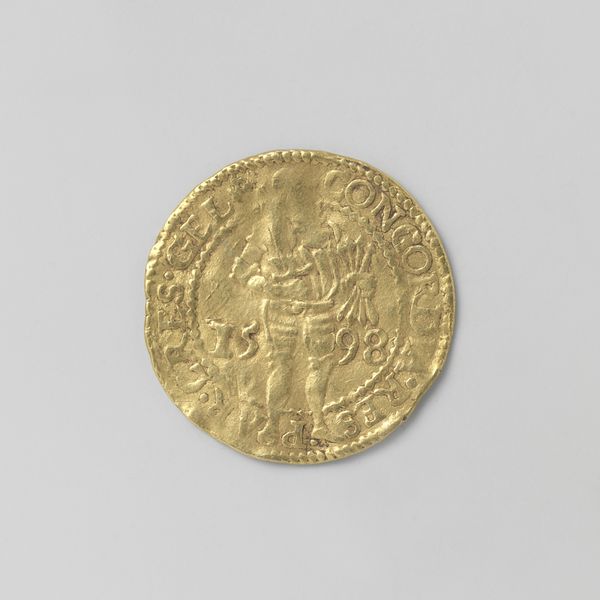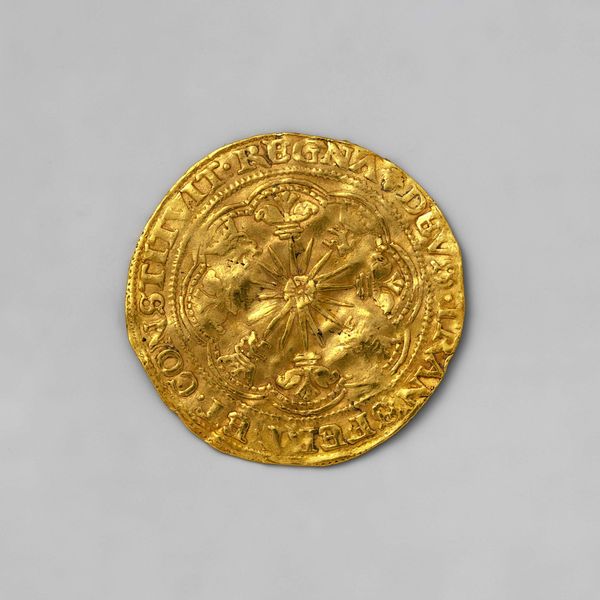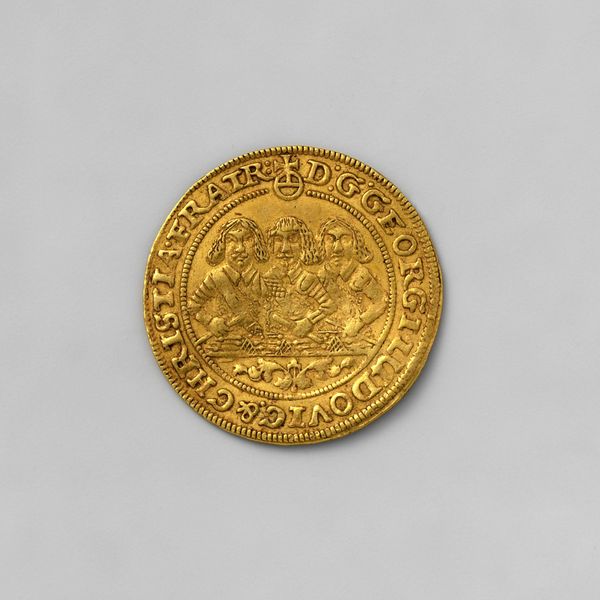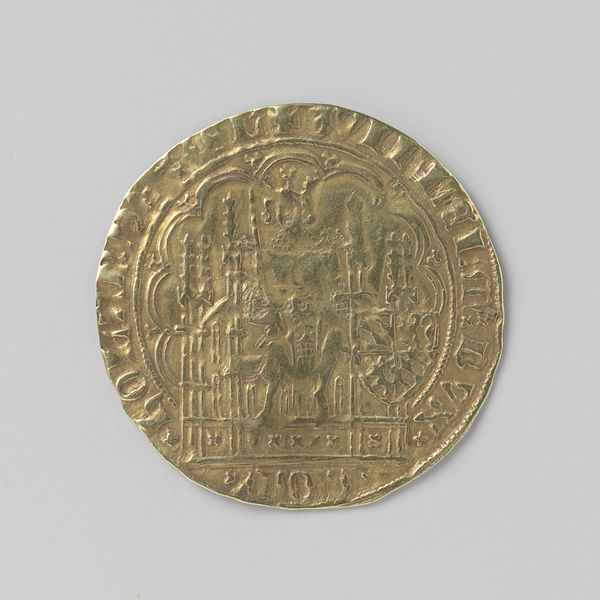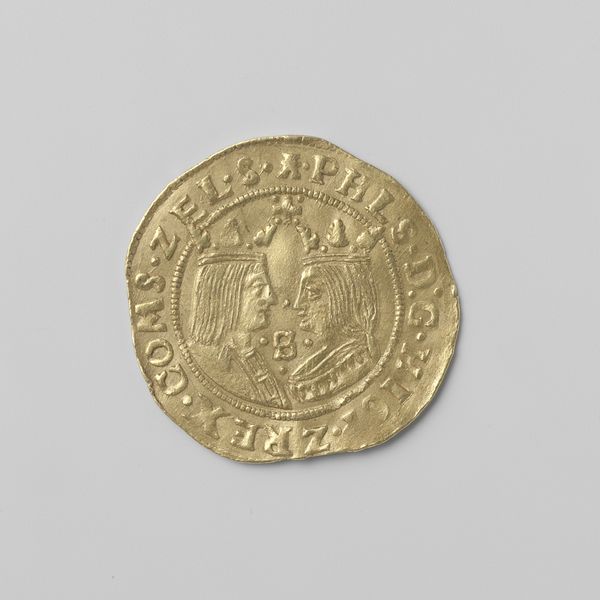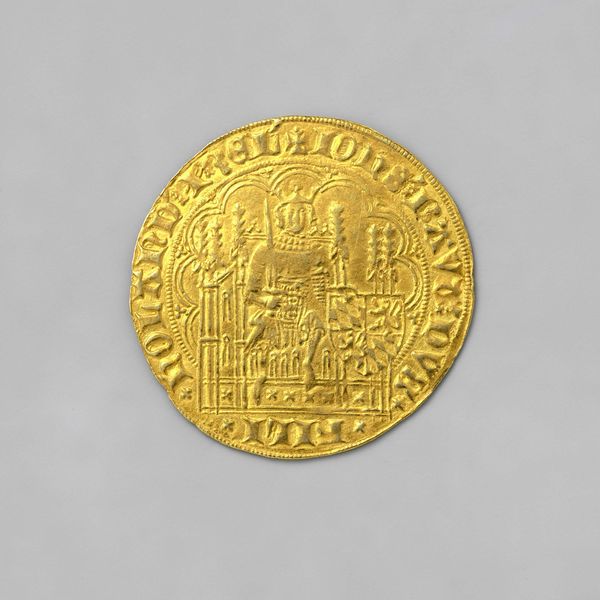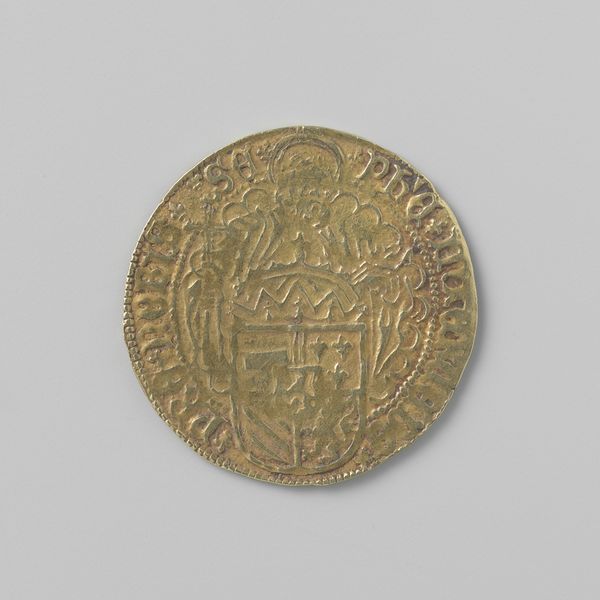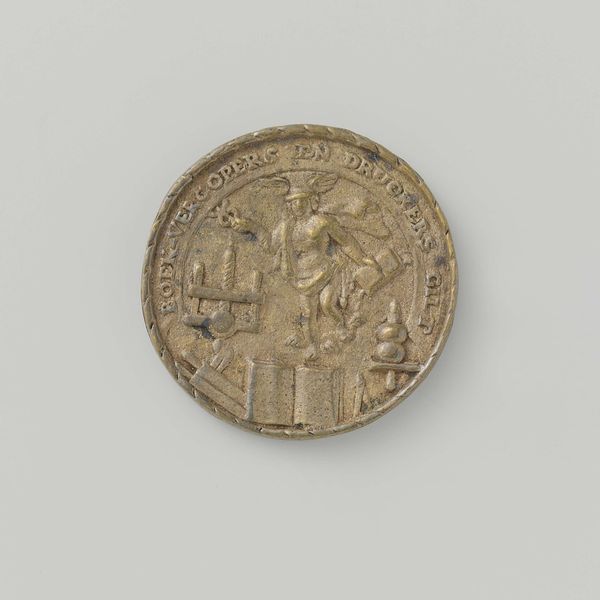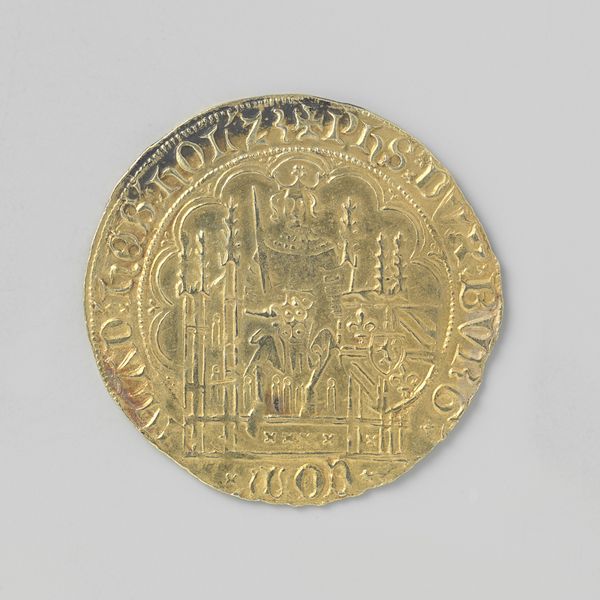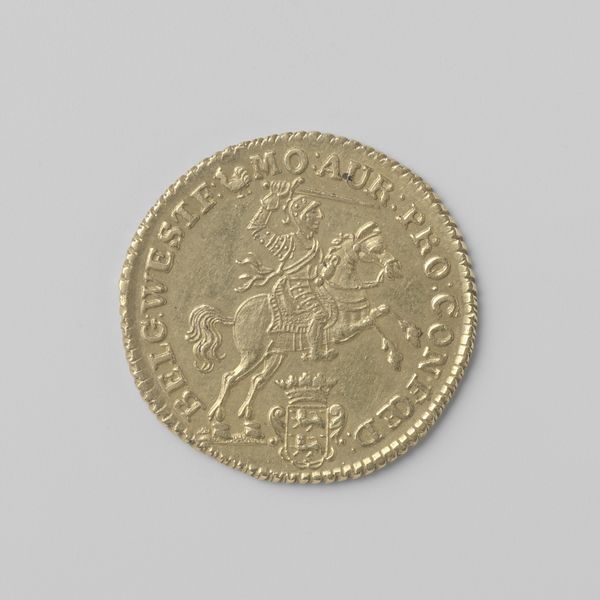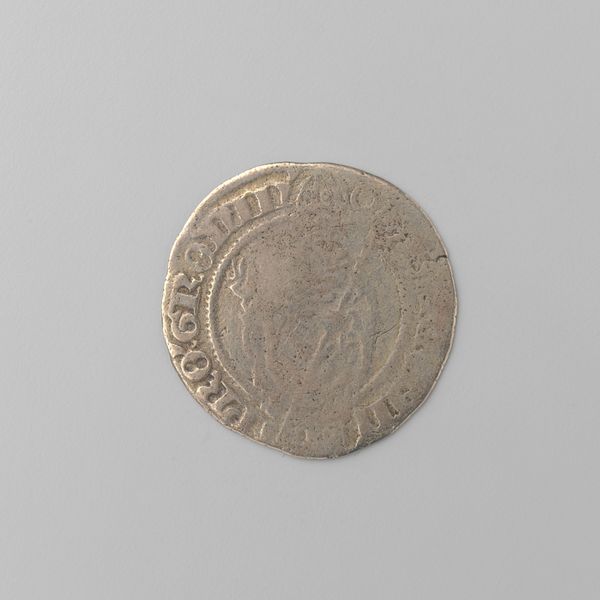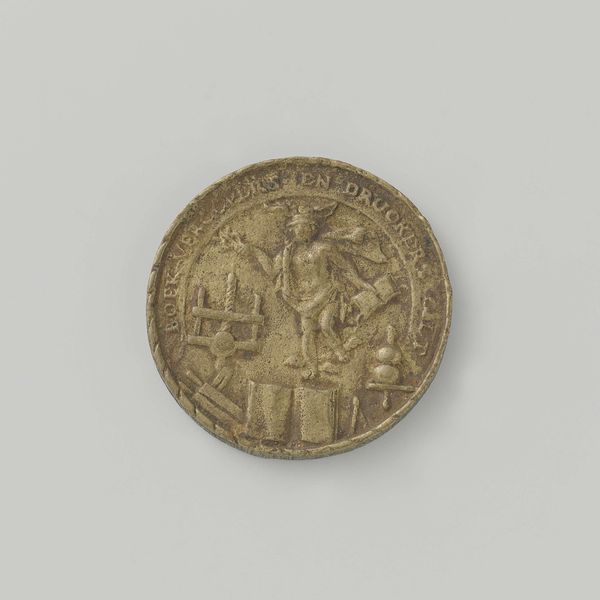
Gold guilder, William V of Bavaria, count of Holland; first gold coin of the County of Holland 1378 - 1388
0:00
0:00
metal, relief
#
portrait
#
medieval
#
metal
#
relief
#
embossed
Dimensions: diameter 2.2 cm, weight 3.50 gr
Copyright: Rijks Museum: Open Domain
Curator: Let’s turn our attention to this gold guilder. Minted between 1378 and 1388, it features William V of Bavaria, count of Holland, and holds the distinction of being the first gold coin from the County of Holland. Editor: My immediate impression is one of miniature power. The scale is so small, yet the craftsmanship and the symbolism—the regal figure, the glint of gold—speak volumes about authority and wealth. Curator: Absolutely. The material itself, gold, is so crucial here. Consider where that gold came from, the labor involved in mining and refining it. And then, to be formed into a coin… it represents a tangible concentration of resources and control. It served as both a currency and a potent symbol for the ruling elite. Editor: Focusing on the coin’s composition, I’m struck by the contrast between the central figure in high relief and the flatness of the surrounding field containing the inscription. It really pushes William V forward, emphasizing his presence and, symbolically, his power. Also, notice how the delicate embossed details in his attire give it real presence. Curator: It's a remarkable example of medieval craftsmanship but more than just aesthetics, this coin tells a story about the socio-economic landscape of the late 14th century. The emergence of gold coinage in Holland reflects growing trade and economic stability, indicative of power consolidation for Count William V. Editor: True, yet from a visual perspective, I can't help but note the almost iconic depiction of William. Sword in hand and shield at his side. Its graphic representation, even in miniature, projects unwavering command. It’s like a portable monument. Curator: And circulating these images! The message reaches far beyond court. This was medieval propaganda in your pocket, purse, or communal treasury, so that no one forgets who's in charge. Editor: It’s fascinating how closely these historical, material concerns intersect with questions of design and visual communication. To think that the aesthetics and power dynamics are so intertwined in an object this small. Curator: Indeed, examining objects such as this is more than looking at art, it's delving into the means of constructing power through craft. Editor: A fitting summary that has given me a richer understanding, beyond pure visual aesthetics.
Comments
rijksmuseum about 2 years ago
⋮
Coins have been used as a means of payment in the Netherlands for about two thousand years. The more trade and services increase, the more important coins become and the greater their number. Coins are also handy: they are made of metal ranging from precious gold to simple copper and thus can be kept and used for a long time. They are small and therefore conveniently portable. Coins also frequently have an official character: they are issued by or on behalf of the government, often with an effigy of a prince or a state symbol. In this way coins are standardized and their value guaranteed.
Join the conversation
Join millions of artists and users on Artera today and experience the ultimate creative platform.
